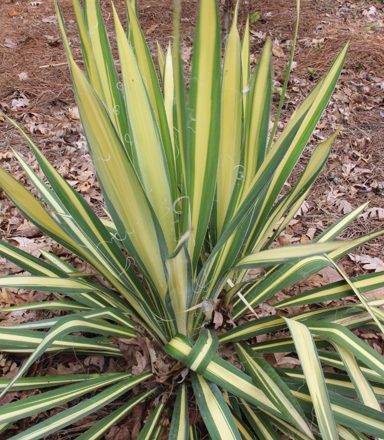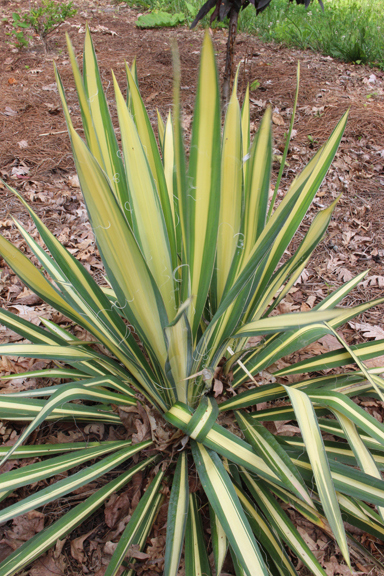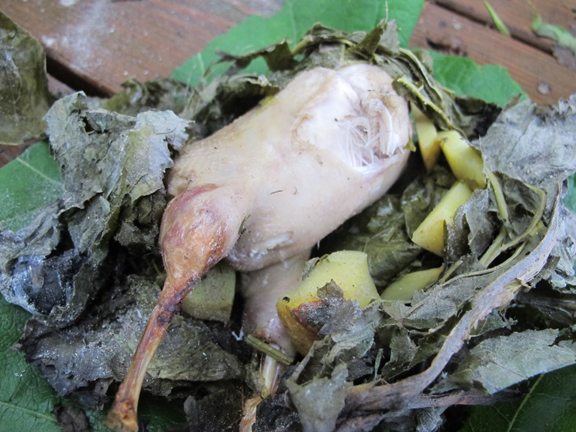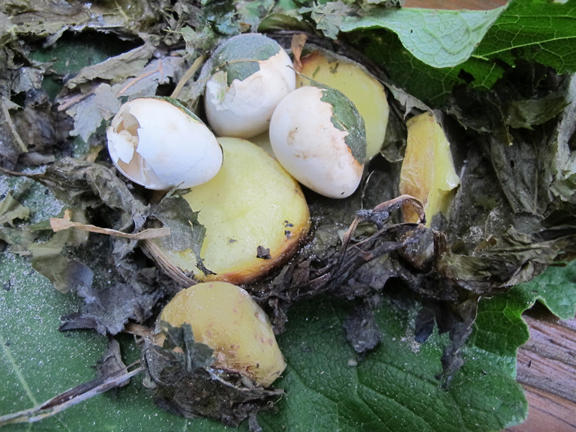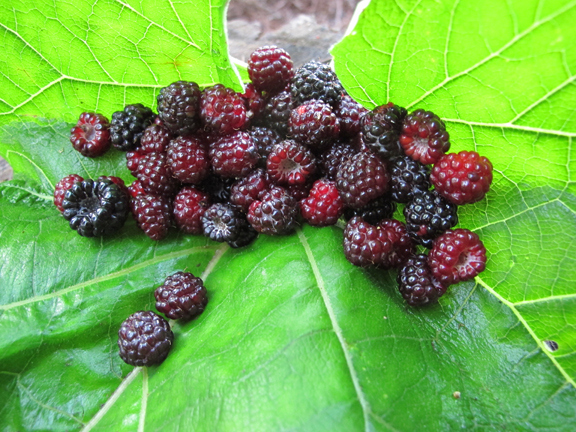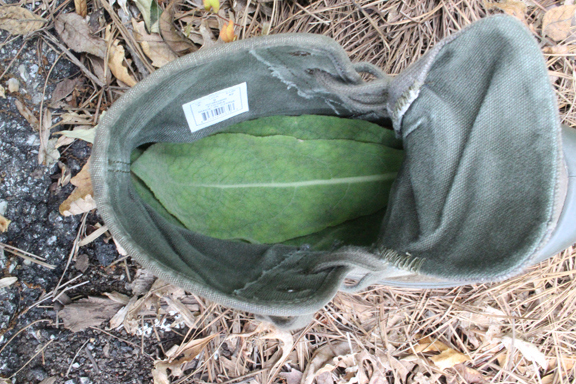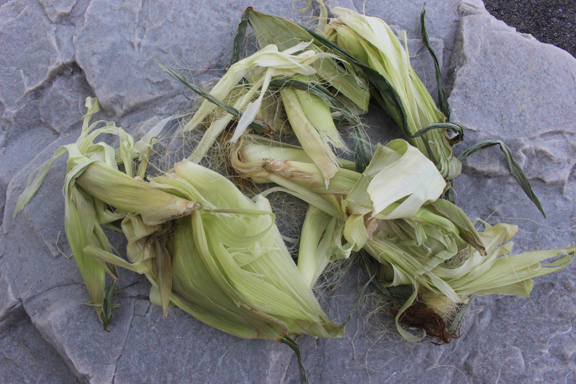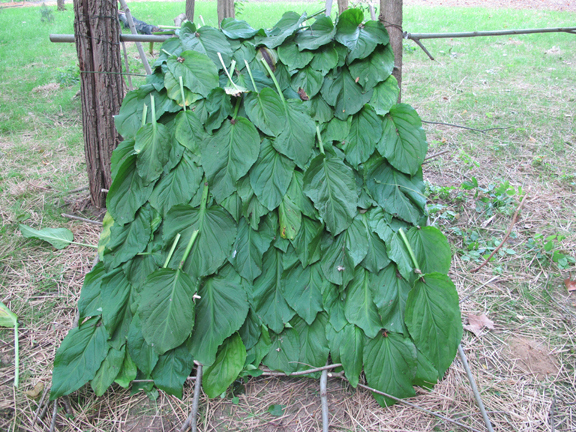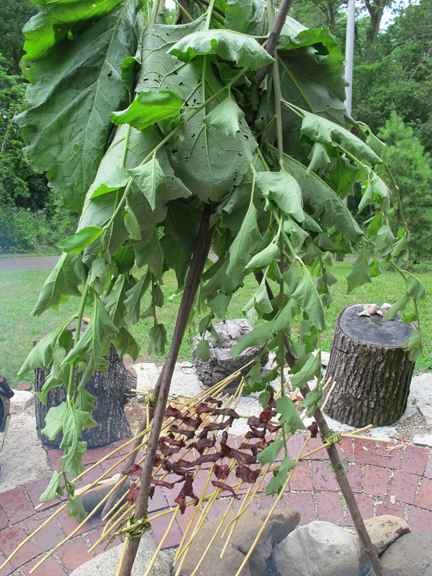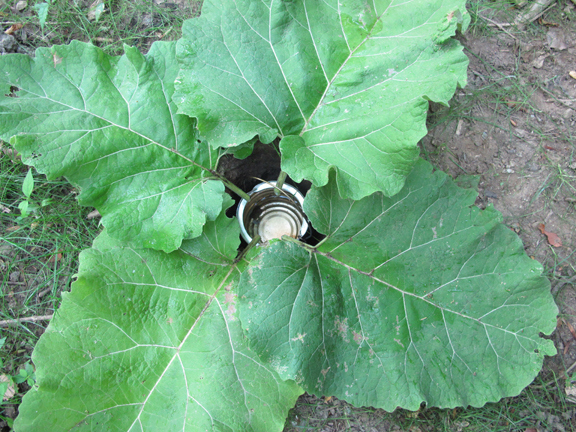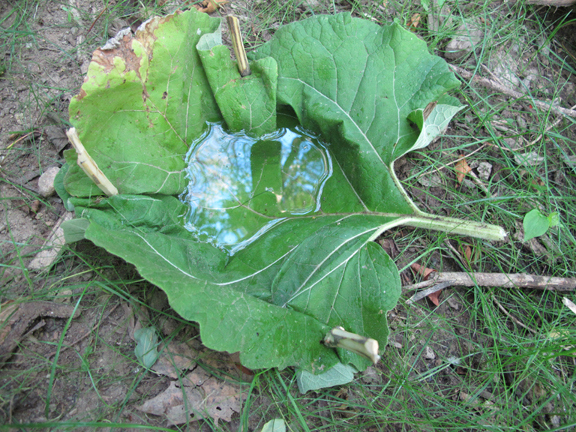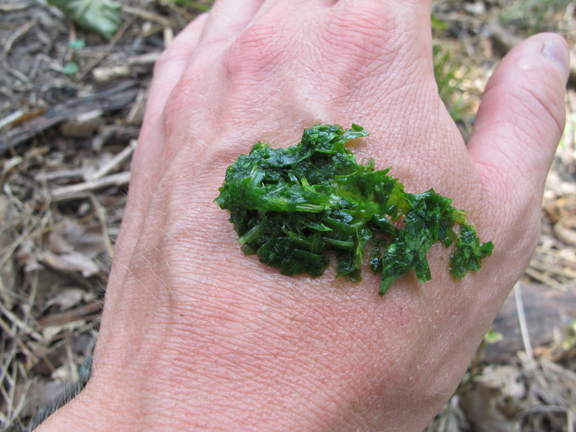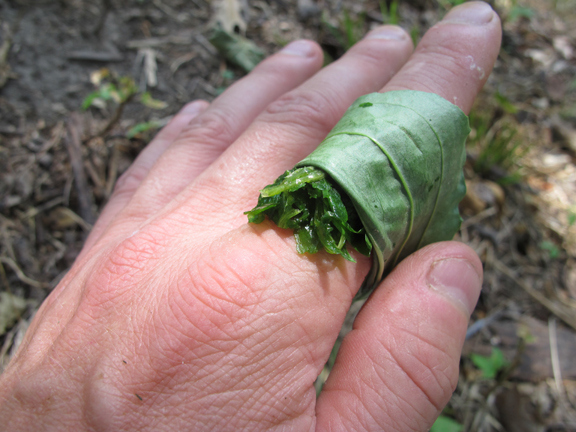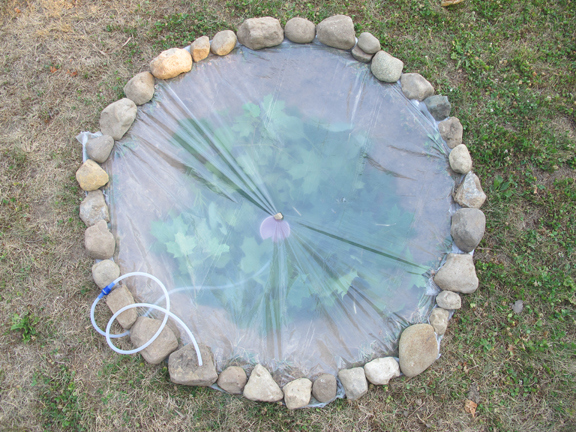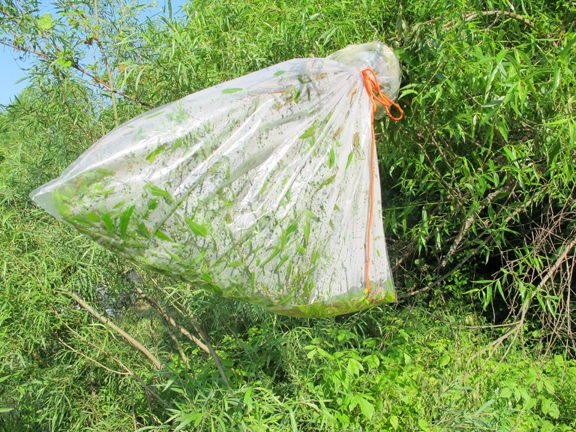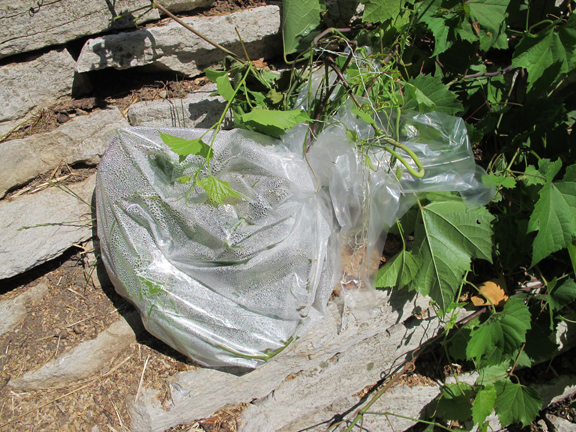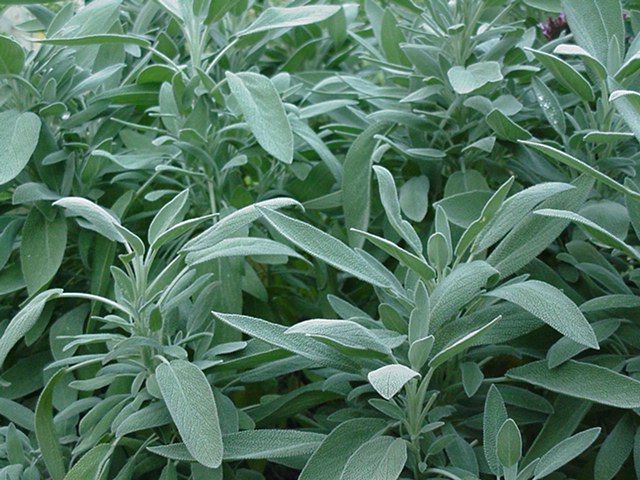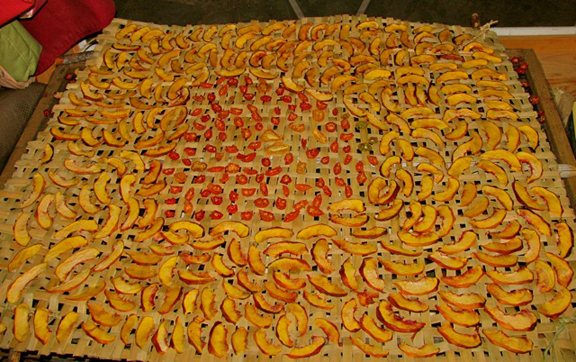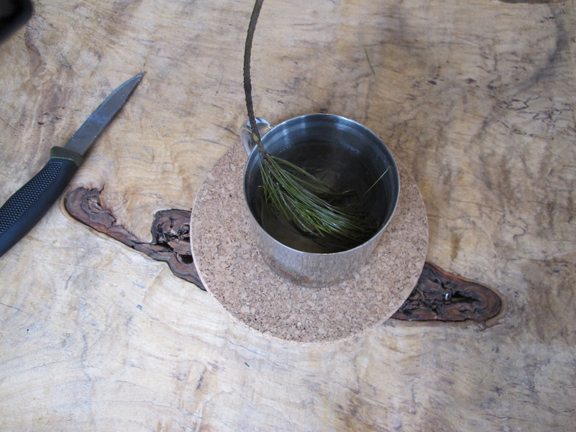Nature provides an abundance of tools and resources if you just know where to look. Today, I’m discussing just one of them – LEAVES. You’re not going to believe all of the survival functions you can do with just LEAVES and a little bit of know-how. No matter the season, leaves can provide you with some kind of a solution. Nature is freaking amazing!
LEAF SURVIVAL HACK # 1: ROPE
Yes, you can make usable cordage from leaves! The leaves you’ll want for this particular task are fibrous ones such as those from Yucca or Cattail. I’ve found that dead yucca and cattail leaves work best but they’ll work when green in a pinch. Below is a photo of a Yucca plant and then also a coil of yucca leaf rope that I made.
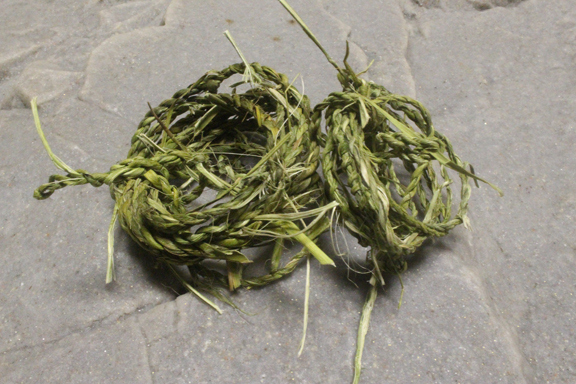 The technique used to fashion usable cordage from fibrous natural materials is called the Reverse Wrap. It’s an awesome survival skill – so cool that I filmed a short video to show you exactly how to do it. Watch the video below:
The technique used to fashion usable cordage from fibrous natural materials is called the Reverse Wrap. It’s an awesome survival skill – so cool that I filmed a short video to show you exactly how to do it. Watch the video below:
LEAF SURVIVAL HACK # 2: NATURE’S TIN FOIL
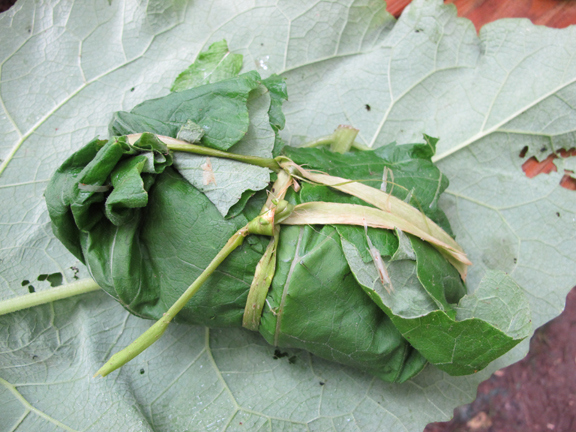 Have you ever wrapped food in tin foil and cooked it in the coals of a fire. When we were kids, Mom would wrap up some ground beef, onions, potatoes and carrots in tin foil and cook them in the coals of a fire. She called them Hobo Dinners. I’ve never found a tin-foil tree in the woods but I’ve found a leaf that works just as good – BURDOCK. Food wrapped in three layers of burdock leaves cooks just as good as any tin foil I’ve ever used. Look how huge the leaves of burdock can get.
Have you ever wrapped food in tin foil and cooked it in the coals of a fire. When we were kids, Mom would wrap up some ground beef, onions, potatoes and carrots in tin foil and cook them in the coals of a fire. She called them Hobo Dinners. I’ve never found a tin-foil tree in the woods but I’ve found a leaf that works just as good – BURDOCK. Food wrapped in three layers of burdock leaves cooks just as good as any tin foil I’ve ever used. Look how huge the leaves of burdock can get.
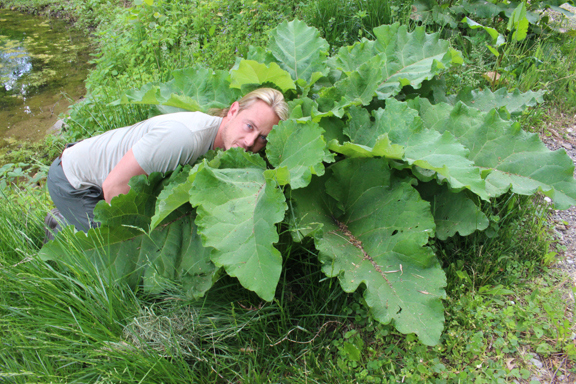 I’ve cooked fish, quail and rabbit in burdock leaves and it never fails to produce a delicious juicy meal. Check out this quail and potatoes we cooked in burdock leaves during a SurviVacation II last summer. We tied it up with Basswood Bark. Mmmmmm, my mouth’s watering just thinking about it. That same day I also used a burdock leaf as an improvised container to hold some freshly picked raspberries.
I’ve cooked fish, quail and rabbit in burdock leaves and it never fails to produce a delicious juicy meal. Check out this quail and potatoes we cooked in burdock leaves during a SurviVacation II last summer. We tied it up with Basswood Bark. Mmmmmm, my mouth’s watering just thinking about it. That same day I also used a burdock leaf as an improvised container to hold some freshly picked raspberries.
LEAF SURVIVAL HACK # 3: INSOLES
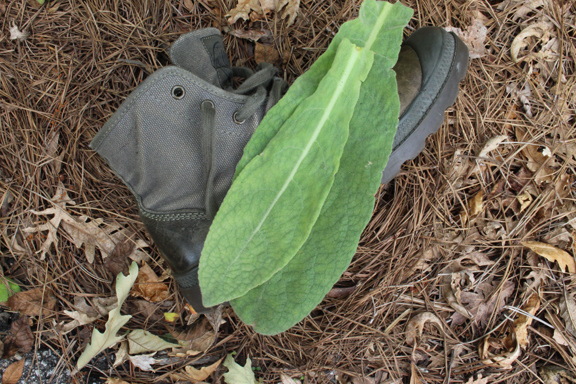 That’s right – SHOE INSOLES! Need some extra cushion to help prevent blisters? How about some extra cushion that is also antibacterial? Look for a mullein plant. It’s very distinct, you can’t miss it. The leaves are thick, durable and fuzzy.
That’s right – SHOE INSOLES! Need some extra cushion to help prevent blisters? How about some extra cushion that is also antibacterial? Look for a mullein plant. It’s very distinct, you can’t miss it. The leaves are thick, durable and fuzzy.
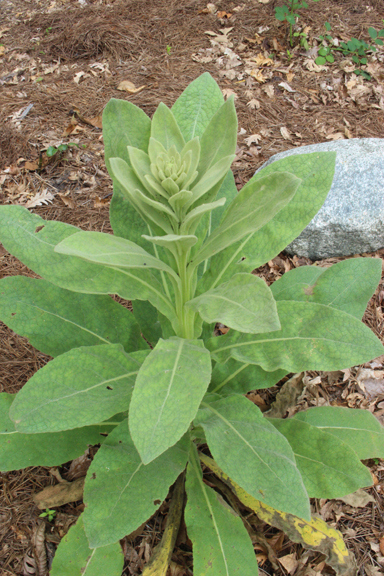 Not only do they make excellent improvised shoe insoles that will reduce foot odor but they also are your go-to natural source for toilet paper. They are also an excellent substitute for paper towel and are very absorptive. I use them as napkins all the time.
Not only do they make excellent improvised shoe insoles that will reduce foot odor but they also are your go-to natural source for toilet paper. They are also an excellent substitute for paper towel and are very absorptive. I use them as napkins all the time.
LEAF SURVIVAL HACK # 4: INSULATION
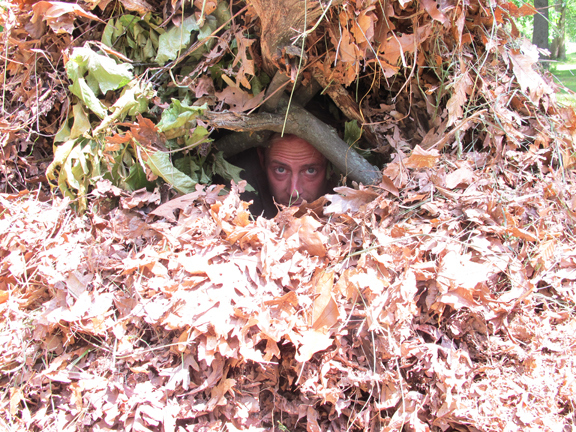 Whether from the cold ground or the air around you, leaves are nature’s perfect insulative material for creating dead air space below and around you. One of the most effective cold weather shelters is a Debris Hut and it’s made almost entirely of leaves. The leaves capture dead air space which acts as a barrier to the cold. They help keep warm air (body heat) in and cold air out. As the cool temps come, Mother Nature drops all the insulation you could ever need to the forest floor. She’s nice that way.
Whether from the cold ground or the air around you, leaves are nature’s perfect insulative material for creating dead air space below and around you. One of the most effective cold weather shelters is a Debris Hut and it’s made almost entirely of leaves. The leaves capture dead air space which acts as a barrier to the cold. They help keep warm air (body heat) in and cold air out. As the cool temps come, Mother Nature drops all the insulation you could ever need to the forest floor. She’s nice that way.
Until his mid-twenties, my Dad slept on what’s called a Shuck Bed. This is literally a mattress stuffed with dried corn husks. He recalls it being a little lumpy, but functional. It hasn’t been that long ago that people used natural vegetation insulation for sleeping purposes.
LEAF SURVIVAL HACK # 5: SHINGLES
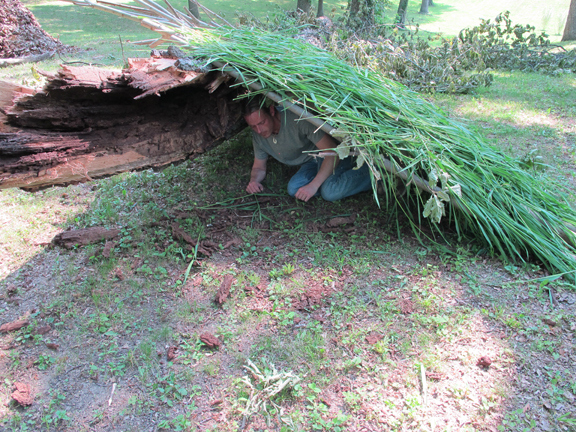 Yes, leaves are not only insulation but shingles as well. Large leaves from plants like burdock and skunk cabbage can be used to shingle a lean-to in a matter of minutes. Leafy branches can be used the same way. Remember to start from the bottom and work your way up, just like you would shingle a house. This overlapping pattern prevents rain from seeping through. Below I used a full burdock plant to protect jerky on a drying rack from a light drizzle.
Yes, leaves are not only insulation but shingles as well. Large leaves from plants like burdock and skunk cabbage can be used to shingle a lean-to in a matter of minutes. Leafy branches can be used the same way. Remember to start from the bottom and work your way up, just like you would shingle a house. This overlapping pattern prevents rain from seeping through. Below I used a full burdock plant to protect jerky on a drying rack from a light drizzle.
LEAF SURVIVAL HACK # 6: HARVESTING WATER
With a little creativity, you can use leaves to direct and harvest water. Rain water is the easiest form of fresh drinking water in the wild if you can get enough of it. Arranging leaves to harvest rain can gather exponentially more if you do it right. Look at them as nature’s little mini-tarps.
LEAF SURVIVAL HACK # 7: KITCHEN WARE
From plates to bowls, leaves can be repurposed in all types of different functional ways. I use basswood leaves for plates and napkins all the time. They’re edible, durable and environmentally safe! Below is a shot of a basswood leaf for reference:
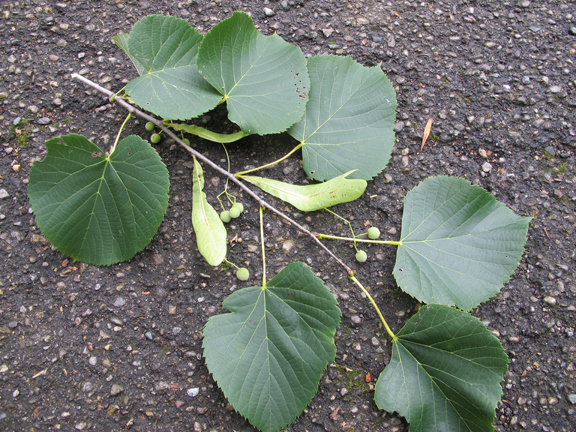 I cooked some biscuits in orange peels the other day and used basswood leaves as a plate on the ground.
I cooked some biscuits in orange peels the other day and used basswood leaves as a plate on the ground.
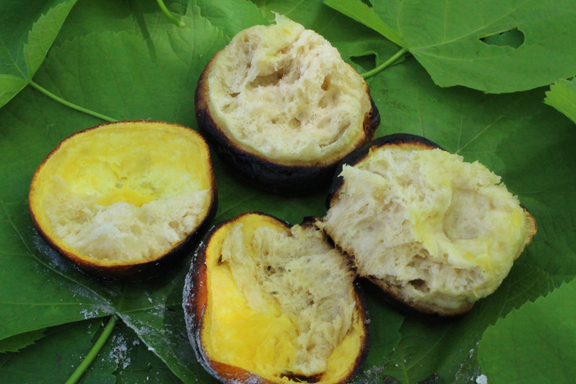 The burdock leaf below is lining a hole in the ground and makes an excellent quickie bowl. I’ve even eaten cereal out of this exact set up before.
The burdock leaf below is lining a hole in the ground and makes an excellent quickie bowl. I’ve even eaten cereal out of this exact set up before.
LEAF SURVIVAL HACK # 8: MEDICATED BANDAGES
 You’ve probably got plantain growing in your back yard right now. Did you know it has built in antibacterial and anti-inflammatory properties and is the perfect remedy for minor cuts, bee stings, stinging nettle and scrapes? Just chew up a leaf, place it on the wound and use another plantain leave to hold it in place. Plantain has earned the nickname “BANDAID PLANT” for a reason. The fibers in the leaves make durable bandages.
You’ve probably got plantain growing in your back yard right now. Did you know it has built in antibacterial and anti-inflammatory properties and is the perfect remedy for minor cuts, bee stings, stinging nettle and scrapes? Just chew up a leaf, place it on the wound and use another plantain leave to hold it in place. Plantain has earned the nickname “BANDAID PLANT” for a reason. The fibers in the leaves make durable bandages.
LEAF SURVIVAL HACK # 9: DISTILLED WATER
Leaves transpire water all day long – called transpiration. It is possible to magnify and capture that water transpiration using clear plastic. Nonpoisonous vegetation placed in a ground pit solar still or live leaves tied off in a clear plastic bag can put out a surprising amount of water in full sun. It’s not the fastest and most efficient way of getting water but it’s an option nonetheless.
LEAF SURVIVAL HACK # 10: FIRE TINDER
Dry leaves make excellent fire tinder and have constituted many a tinder bundle for me over the years. Some dried leaves, such as from the sage plant(shown below), smolder very well and can be used to carry an ember across long distances.
LEAF SURVIVAL HACK # 11: MATS, WALLS, BASKETS, DOORS and ROOFING
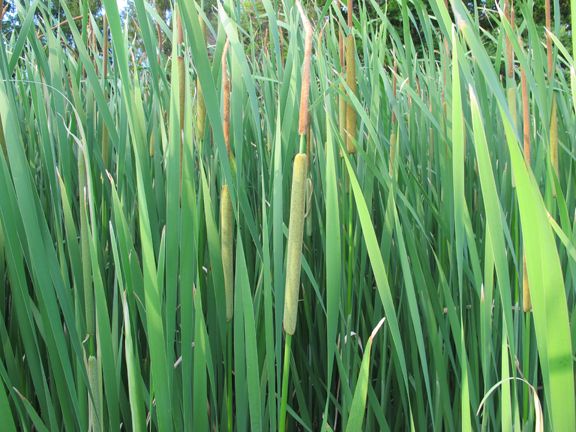 Leaves from a variety of plants can be woven into about anything you can image, from baskets to shelter walls. Cattail leaves were used extensively by Native American Indians as a universal weaving material. This blog (http://sustainablelivingproject.blogspot.com/2012/09/woven-cattail-mats.html) has a great cattail weaving tutorial and used a woven cattail mat to dry summer fruits and berries. What an awesome idea!
Leaves from a variety of plants can be woven into about anything you can image, from baskets to shelter walls. Cattail leaves were used extensively by Native American Indians as a universal weaving material. This blog (http://sustainablelivingproject.blogspot.com/2012/09/woven-cattail-mats.html) has a great cattail weaving tutorial and used a woven cattail mat to dry summer fruits and berries. What an awesome idea!
Cattail leaves were also used to weave hats, shoes, clothing, chair seats, fishing nets, duck decoys and children’s toys. It is an amazingly durable weaving material.
LEAF SURVIVAL HACK # 12: FOOD
I can’t even list all of the wild plant leaves that are edible. I’ve eaten leaves raw, baked, roasted, dried and often use them as wraps instead of tortillas. One of the my favorite wild meals is shredded bluegill mixed with yellow wood sorrel and wrapped in basswood leaves. I also love young basswood leaves, dandelion greens and wood sorrel mixed in a salad with a little olive oil and vinegar. Below is dandelion and yellow wood sorrel – both of which you probably have in your back yard.
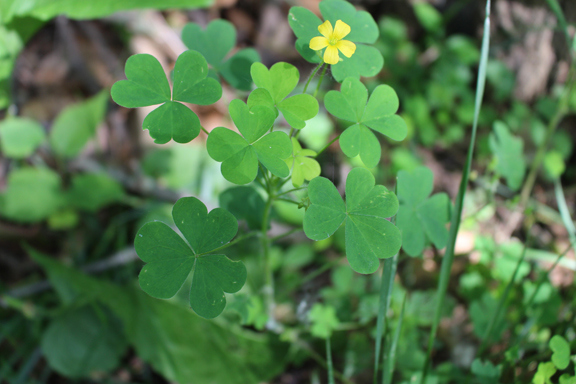 I also regularly enjoy a variety of bush teas, including pine needle tea, staghorn sumac tea and stinging nettle tea. There’s tea around every corner in the wilderness!
I also regularly enjoy a variety of bush teas, including pine needle tea, staghorn sumac tea and stinging nettle tea. There’s tea around every corner in the wilderness!
What other survival uses for LEAVES can YOU think of????
Remember, it’s not IF but WHEN


